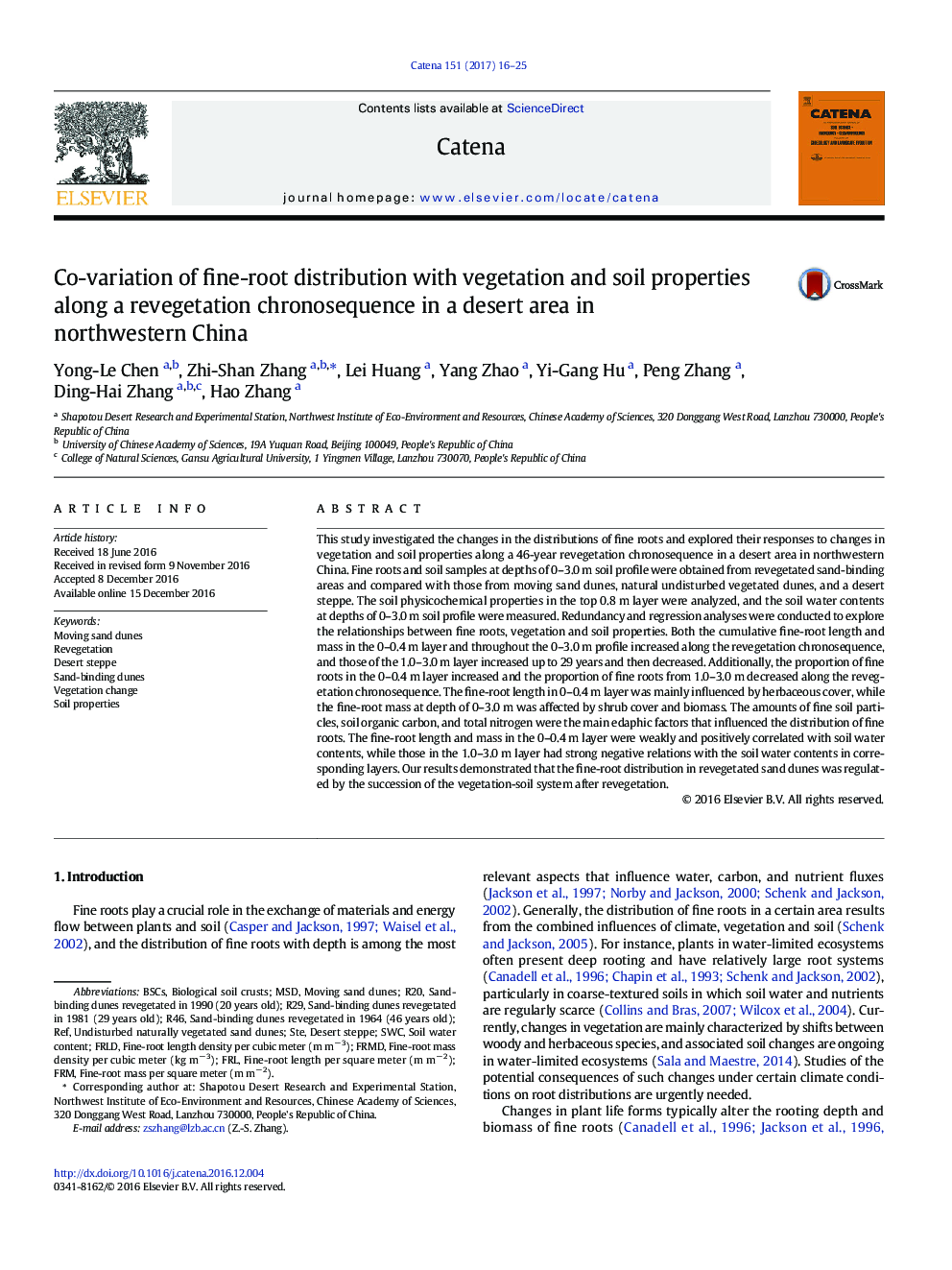| Article ID | Journal | Published Year | Pages | File Type |
|---|---|---|---|---|
| 5770169 | CATENA | 2017 | 10 Pages |
â¢Effects of revegetation on fine-root distribution are studied in a desert area.â¢Fine roots distribute shallower along the 46-year revegetation chronosequence.â¢Herbaceous cover and shrubs biomass affect fine-root length and mass, respectively.â¢Soil particle size and its associated soil properties affect fine-root distribution.â¢Fine-root length and mass negatively respond to soil water content in deep layer.
This study investigated the changes in the distributions of fine roots and explored their responses to changes in vegetation and soil properties along a 46-year revegetation chronosequence in a desert area in northwestern China. Fine roots and soil samples at depths of 0-3.0Â m soil profile were obtained from revegetated sand-binding areas and compared with those from moving sand dunes, natural undisturbed vegetated dunes, and a desert steppe. The soil physicochemical properties in the top 0.8Â m layer were analyzed, and the soil water contents at depths of 0-3.0Â m soil profile were measured. Redundancy and regression analyses were conducted to explore the relationships between fine roots, vegetation and soil properties. Both the cumulative fine-root length and mass in the 0-0.4Â m layer and throughout the 0-3.0Â m profile increased along the revegetation chronosequence, and those of the 1.0-3.0Â m layer increased up to 29Â years and then decreased. Additionally, the proportion of fine roots in the 0-0.4Â m layer increased and the proportion of fine roots from 1.0-3.0Â m decreased along the revegetation chronosequence. The fine-root length in 0-0.4Â m layer was mainly influenced by herbaceous cover, while the fine-root mass at depth of 0-3.0Â m was affected by shrub cover and biomass. The amounts of fine soil particles, soil organic carbon, and total nitrogen were the main edaphic factors that influenced the distribution of fine roots. The fine-root length and mass in the 0-0.4Â m layer were weakly and positively correlated with soil water contents, while those in the 1.0-3.0Â m layer had strong negative relations with the soil water contents in corresponding layers. Our results demonstrated that the fine-root distribution in revegetated sand dunes was regulated by the succession of the vegetation-soil system after revegetation.
